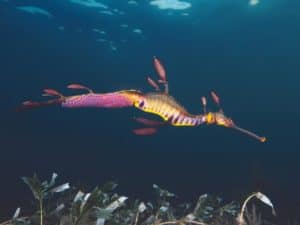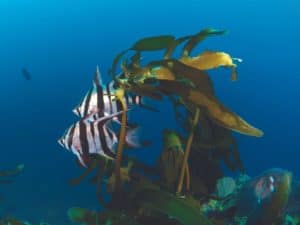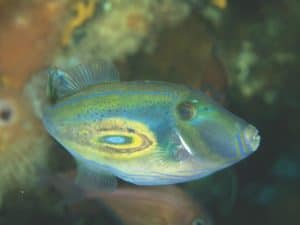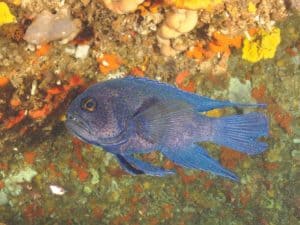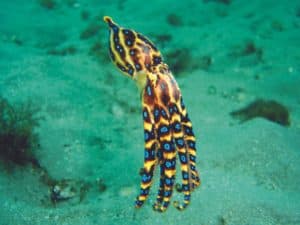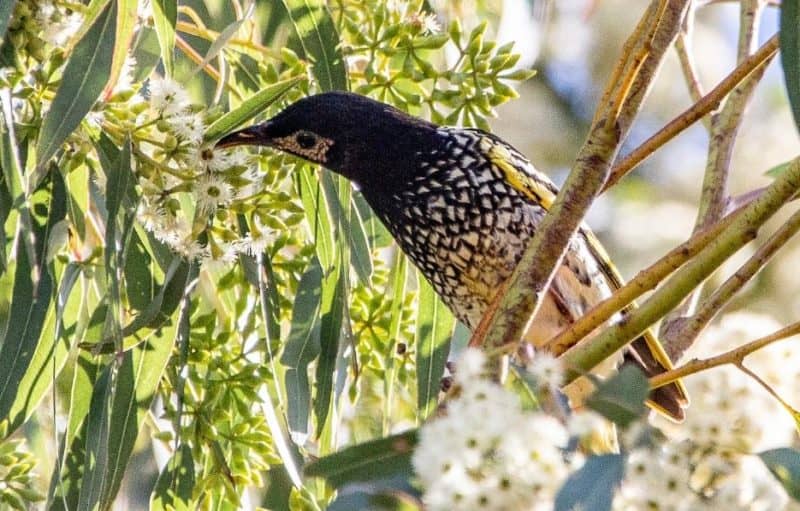PARK WATCH Article December 2021 |
A brief introduction to the staggering biodiversity of our local reefs by ReefWatch intern India Ambler.
A biodiversity hotspot
The Great Southern Reef is one of Australia’s best-kept secrets. It’s a biodiversity hotspot, bursting with life and vitality. Although the Great Southern Reef may be starkly different from its well-known tropical sibling, the Great Barrier Reef, that doesn’t make it any less remarkable. You might be wondering why this is – what makes the reef so special?
Well, the answer lies in its geographical isolation. Our marine environment has been shaped by years of unusual environmental conditions and ecological processes, both of which have greatly influenced the evolution of its natural habitats.
A rocky reef system spanning 8000 kilometres of coastline along Western Australia, South Australia, Victoria and New South Wales constitutes the backbone of the Great Southern Reef. It connects highly productive kelp forests, their golden fronds reaching up gracefully towards the light, with equally astonishing sponge gardens and vibrant seagrass meadows. Soft and sandy substrates provide further complexity to what amounts to a truly diverse, interconnected reef system. We have previously written about the Great Southern Reef, but now we would like to introduce you to some of the unique creatures that call it home.
Through the looking glass
The species that dwell in the cooler (‘temperate’) waters of Australia’s southern coast are an extraordinary bunch. From the estimated 1,500 seaweed species growing upon the reef to the sponges, crustaceans, echinoderms, bryozoans, molluscs and vertebrates – including the iconic Weedy Seadragon, our state marine animal. Each organism has adapted to its temperate surroundings in order to survive.
Let’s take a closer look at some of Victoria’s native, or endemic, species. The fish of our southern waters are exceptionally diverse. Old Wives (Enoplosus armatus), with bands of dark brown and white, glide through shallow coastal habitats, brandishing their poisonous spines. Leatherjackets are particularly striking. You may have seen the aptly-named Horseshoe Leatherjacket (Meuschenia hippocrepis), which possesses a black horse-shoe marking behind its pectoral fin.
In deeper waters of more than 30 metres, Southern Blue Devils (Paraplesiops meleagris) roam the reef. This fish has impressively large fins for its size and numerous spots on its startlingly blue body. It commonly dwells in caves or crevices nestled in the reef. But don’t let this fool you: the Southern Blue Devil is an inquisitive character, beloved by divers. Impressively, individuals may live for up to 60 years.
Venture closer to the hard, rocky substrate if you’ve got an eye for detail. The nudibranch, or “nudi”, is a personal favourite of divers worldwide. These soft-bodied molluscs come in an abundance of shapes and colours, lavishly adorned with branch-like gills and horns that protrude from their heads and backs. With a camera in hand, you may find that nudibranchs, with their photogenic attributes and intriguingly diverse appearances, make great subjects. Nudibranchs and their cousins, collectively known as sea slugs, are the focus of our Sea Slug Census project.
Keep a close vigil for species that prefer to conceal themselves in the shadows. The Southern Blue Ringed Octopus (Hapalochlaena maculosa), a surreptitious predator with a highly toxic venom, is best left to its own devices. While these octopuses are generally passive in nature, their tell-tale rings of iridescent blue become visible when they feel threatened.
Larger marine species like sharks and rays tend to be quite shy. As such, it may take some patience – and a stroke of luck – to spot them. The Spotted Wobbegong (Orectolobus maculatus) is well camouflaged, with its patterned body and green-ish brown colouration. It’s well-known for the whisker-like tassels that extend from its jaw, a trait that afforded it the name ‘wobbegong’ (meaning “shaggy beard”), believed to stem from an Indigenous Australian language. Fitting, isn’t it?
The face of the fish count
We’ve come to the end of our brief ‘meet and greet’ of the marine species that reside in Victoria’s portion of the Great Southern Reef – save one. The ‘face’ of the Great Victorian Fish Count in 2021 is the Senator Wrasse (Pictilabrus laticlavius). (See top image on this page)
This species is sexually dimorphic, meaning that individual appearances vary with sex. It is also a protogynous hermaphrodite. As such, females undergo a sex change during their second to fifth year.
Males are green-bodied, with reddish-violet stripes on their sides. Comparatively, females and juveniles are often a reddish- or greenish-brown in colour, with rows of black spots above the lateral line and dusky bars below it. All individuals are relatively slender in shape and may grow up to 25 centimetres in length.
You’ll find this species darting among the kelp at varying depths (3–40 metres). They’re good at concealing themselves, so you may need to keep your eyes peeled!
Broader implications
In Victoria, VNPA’s ReefWatch program has been working hard to bring the marine life so often overlooked into the public eye. A number of projects are underway to achieve this goal, including the Great Victorian Fish Count and the Sea Slug Census. These initiatives provide opportunities for community members to get involved in important research, learn about the local habitats and species around them, and hence develop a sense of connection with the marine environment.
The Great Victorian Fish Count has enabled us to uncover the identities of many species dwelling in Port Phillip Bay and beyond. The effort put in by the community over the years has been invaluable. Excitingly, we now have a dataset that spans over ten years and are working on a report to summarise the key findings. Not only will this data allow us to identify changes in species abundances over time, but it may help to shape our decisions about the management of our marine habitats in the future.
Did you like reading this article? You can read the latest full edition of Park Watch magazine online here.
Want to be kept up to date about this and other nature issues in Victoria? Subscribe to our email updates.
You can also receive our print magazine Park Watch four times a year by becoming a member. Find out more here.
